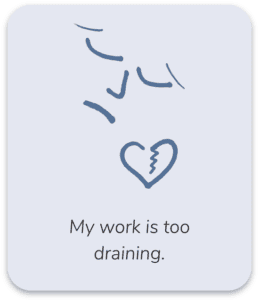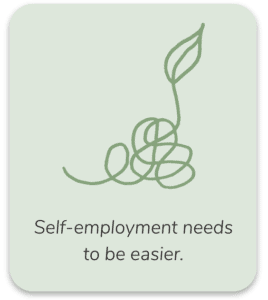When people are first wanting to venture into self-employment or grow their side business into something more sturdy, they think it requires a big leap, and going all in. But here’s what actually happens: A big leap is not that common. Here’s the behind-the-scenes of what helps in the meantime.
MOST people have something else going on to pay the bills for a while… a long while, y’all.
For instance, they might keep their business idea as a side gig for years, or they might start their business and get what I call “bridge work” alongside, such as consulting or part-time contract work in a field you already know.
The key takeaway here is that “bridge work” is the NORM. It’s NOT a failure of your business, or of you! It’s also good for you and your business.
Why bridge work is GOOD for you and your business:

- Then you won’t put so much pressure on your business “seedling” to do the work of a grown tree. That’s not good for your business if you are yanking on little sprouts. 🌱
- It keeps you feeling useful and valuable by still contributing and getting paid.
- It gets the money flowing so you can breathe and pay the bills. 😅 (I like breathing room.)
- It could also be a form of networking. Example: If you’re an Uber driver on the side but you want to be a grant-writer, you could be having connecting conversations with interested people on those rides. (Hey, get paid to do networking.)
- You could be building on your business skills like bookkeeping, project management, or newsletter writing. (Getting paid to learn!)
- Your family members won’t freak out as much about the lack of earning, and that’s good for everyone’s mental health.
How does that sound? I hope you’re feeling reassured.
Warning: Not all jobs are good for your business. Here’s a checklist for the right kind of bridge work.
Tips for making it work
In my own journey, I used a combination of things to fill the gaps for a while. I started doing a little marketing consulting on the side of a job. Then as I ventured out more, I left the job (which took a lot of courage and support for me).
I kept the consulting as a bridge while working towards something more aligned for me, which I had to first discover with the help of a career coach.
Once I chose coaching as my business focus, I kept the consulting work on the side, to support me while the coaching side grew. I gradually tapered off the bridge consulting as my coaching work expanded. It wasn’t easy to figure it all out but I got a lot of help. [more about what got me through the transition]
I tried not to pressure my fledging sprout of a business to provide all the income until it actually could.
Bottom Line
No more yanking on the little sprout of a business.
Let it grow great and strong over time, with support.






